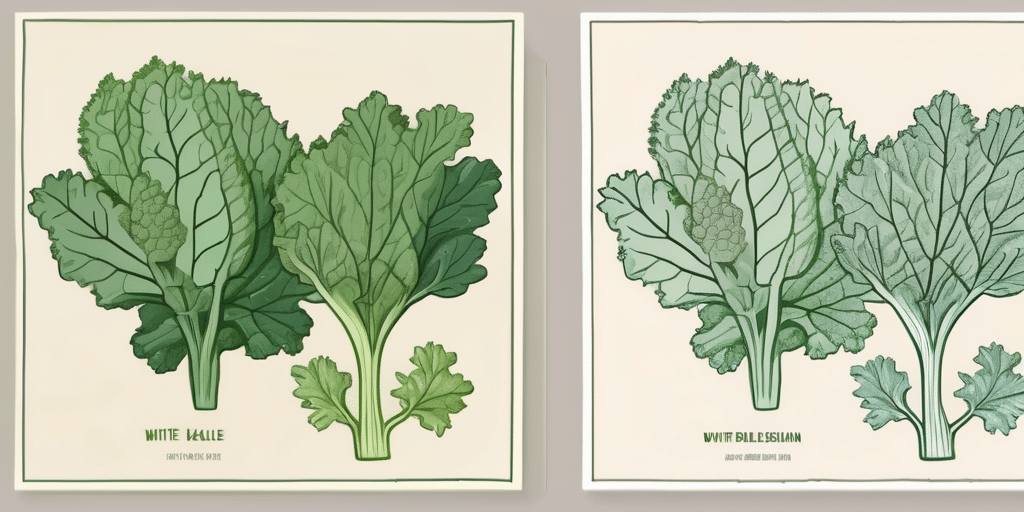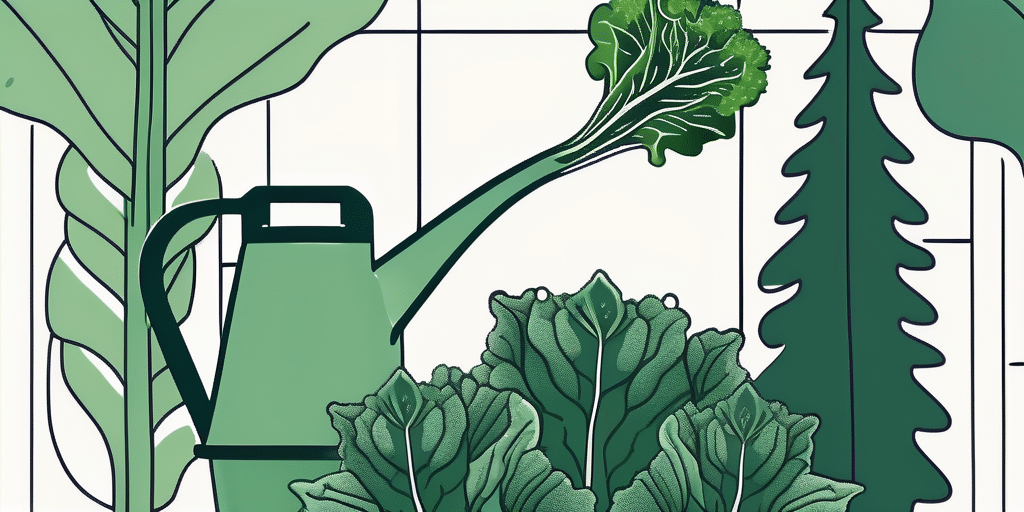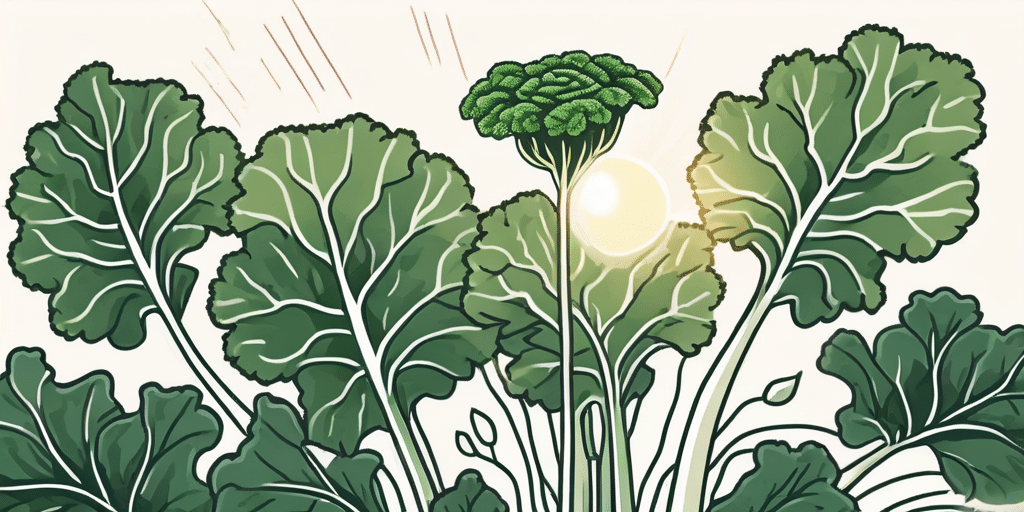Kale, with its nutrient-rich leaves and versatility in cooking, has become a popular vegetable among health-conscious individuals. One variety that thrives well in the Florida climate is the Vates Kale. In this article, we will explore everything you need to know about growing Vates Kale in Florida, including when to plant, how to care for it, and when to harvest the delicious leaves.
Climate & Hardiness Zones in Florida
Before you start planting Vates Kale, it’s important to understand the climate and hardiness zones in Florida. The state is mainly divided into four zones:
- North Florida: Zone 8a to 8b
- Central Florida: Zone 9a to 9b
- South Florida: Zone 10a to 11a
These zones indicate the average minimum winter temperatures, which help determine when to plant certain crops.
North Florida, including cities like Tallahassee and Jacksonville, experiences cooler winters compared to the rest of the state. This region is known for its diverse flora and fauna, with many deciduous trees shedding their leaves in the winter months.
Central Florida, home to Orlando and Tampa, enjoys a more moderate climate with warm summers and mild winters. This zone is ideal for a wide range of crops, including citrus fruits, strawberries, and various vegetables.
When to Plant Vates Kale in Florida
The best time to plant Vates Kale in Florida is during the cooler months when the temperatures are mild. This ensures that the plant can establish strong roots before the intense summer heat sets in. Here is a general guide on when to plant based on the different regions:
- North Florida: Plant Vates Kale in early fall (September to October) for a winter harvest.
- Central Florida: Plant Vates Kale in fall (October to November) for a late fall to winter harvest.
- South Florida: Plant Vates Kale in late fall to early winter (November to December) for a winter to early spring harvest.
Remember, these planting times can vary depending on the specific microclimate in your area, so be sure to monitor temperature and weather conditions accordingly.
When selecting a location to plant your Vates Kale, choose a spot that receives at least 6-8 hours of sunlight per day. Kale thrives in well-draining, fertile soil with a pH level between 6.0 and 7.5. Before planting, amend the soil with compost or aged manure to provide essential nutrients for healthy growth.
Watering is crucial for the success of your Vates Kale crop. Aim to keep the soil consistently moist, but not waterlogged. Consider using a drip irrigation system to deliver water directly to the roots and minimize moisture on the leaves, which can lead to fungal diseases.
How to Grow Vates Kale
Now that you know when to plant Vates Kale in Florida, let’s dive into the steps for successful cultivation:
- Choose a Suitable Location: Vates Kale prefers full sun, but it can tolerate partial shade. Select a spot in your garden that receives at least 6 hours of direct sunlight per day.
- Prepare the Soil: Kale thrives in well-drained, fertile soil. Amend the soil with organic matter like compost to improve its fertility and drainage.
- Sow the Seeds: Create furrows in the soil about ½ inch deep and plant the Vates Kale seeds around 6 inches apart. Cover the seeds with soil and gently pat them down.
- Watering: Keep the soil consistently moist during germination and establishment. Once the plants are established, water deeply but infrequently, allowing the topsoil to dry out slightly between waterings.
- Feeding: Fertilize the Vates Kale plants every 4-6 weeks with a balanced organic fertilizer. Follow the package instructions for proper application rates.
- Pest and Disease Control: Monitor the plants regularly for pests like aphids or caterpillars. Use organic pest control methods if necessary, such as neem oil or insecticidal soaps. Avoid overwatering, as it can lead to fungal diseases.
- Harvesting: Vates Kale leaves are ready for harvest when they reach a length of 6-8 inches. Harvest the outer leaves first, leaving the central ones to continue growing. This allows for multiple harvests over the season.
When it comes to growing Vates Kale, there are a few additional tips and tricks that can help you achieve even better results. One important aspect to consider is the timing of planting. While Vates Kale can be grown year-round in Florida, it is best to avoid planting during the hottest months of summer. The intense heat can cause the plants to bolt and become bitter.
Another factor to keep in mind is the spacing between the plants. While the recommended spacing is around 6 inches, you can experiment with different spacing options to see what works best for your specific garden. Some gardeners find that giving the plants a bit more space allows for better air circulation, reducing the risk of fungal diseases.
Additionally, it’s worth mentioning that Vates Kale is a cold-hardy variety, meaning it can withstand frost and even thrive in cooler temperatures. In fact, some gardeners find that the flavor of Vates Kale improves after a frost, as it enhances the sweetness and tenderness of the leaves.
Frequently Asked Questions
Here are some common questions about growing Vates Kale in Florida:
Vates Kale, a popular leafy green vegetable, thrives in the warm climate of Florida. When planting Vates Kale in containers, it’s essential to ensure that the containers have sufficient depth to accommodate the plant’s root system. Additionally, proper drainage is crucial to prevent waterlogging, which can lead to root rot. Choose a container with drainage holes at the bottom and use a well-draining potting mix to promote healthy growth. Regular watering is key to keeping Vates Kale in containers healthy and thriving in the Florida sun.
- Can I grow Vates Kale in containers? Yes, Vates Kale can be grown in containers as long as they have sufficient depth and drainage. Use a well-draining potting mix and water regularly.
- What are the health benefits of Vates Kale? Vates Kale is packed with essential vitamins and minerals, including vitamin K, vitamin C, calcium, iron, and antioxidants. It is known for its anti-inflammatory properties and is beneficial for eye health, digestion, and immune support.
- How do I store Vates Kale? Store harvested Vates Kale leaves in the refrigerator. Rinse the leaves, dry them thoroughly, and store them in a plastic bag with a paper towel to absorb excess moisture. They can last up to a week.
Furthermore, Vates Kale is a versatile vegetable that can be enjoyed in various culinary dishes. From salads and smoothies to soups and stir-fries, the possibilities are endless. Its hearty texture and earthy flavor make it a favorite ingredient among health-conscious individuals and culinary enthusiasts alike. Incorporating Vates Kale into your diet not only adds a nutritional boost but also introduces a delicious element to your meals.
Join the How to Grow Everything Community
Ready to take your Florida gardening to the next level? Subscribe for free to How to Grow Everything and learn how to build the garden of your dreams! Receive personalized gardening advice tailored to your specific location, grow zone, and experience level. Our family is dedicated to helping you succeed in your gardening journey with the best tips and deals, delivered straight to your inbox. No spam, just pure gardening gold. Plus, you’ll get access to special offers and thousands of free articles to ensure your Vates Kale—and all your garden plants—thrive. Subscribe now and join a community where growth and knowledge are 100% free!






